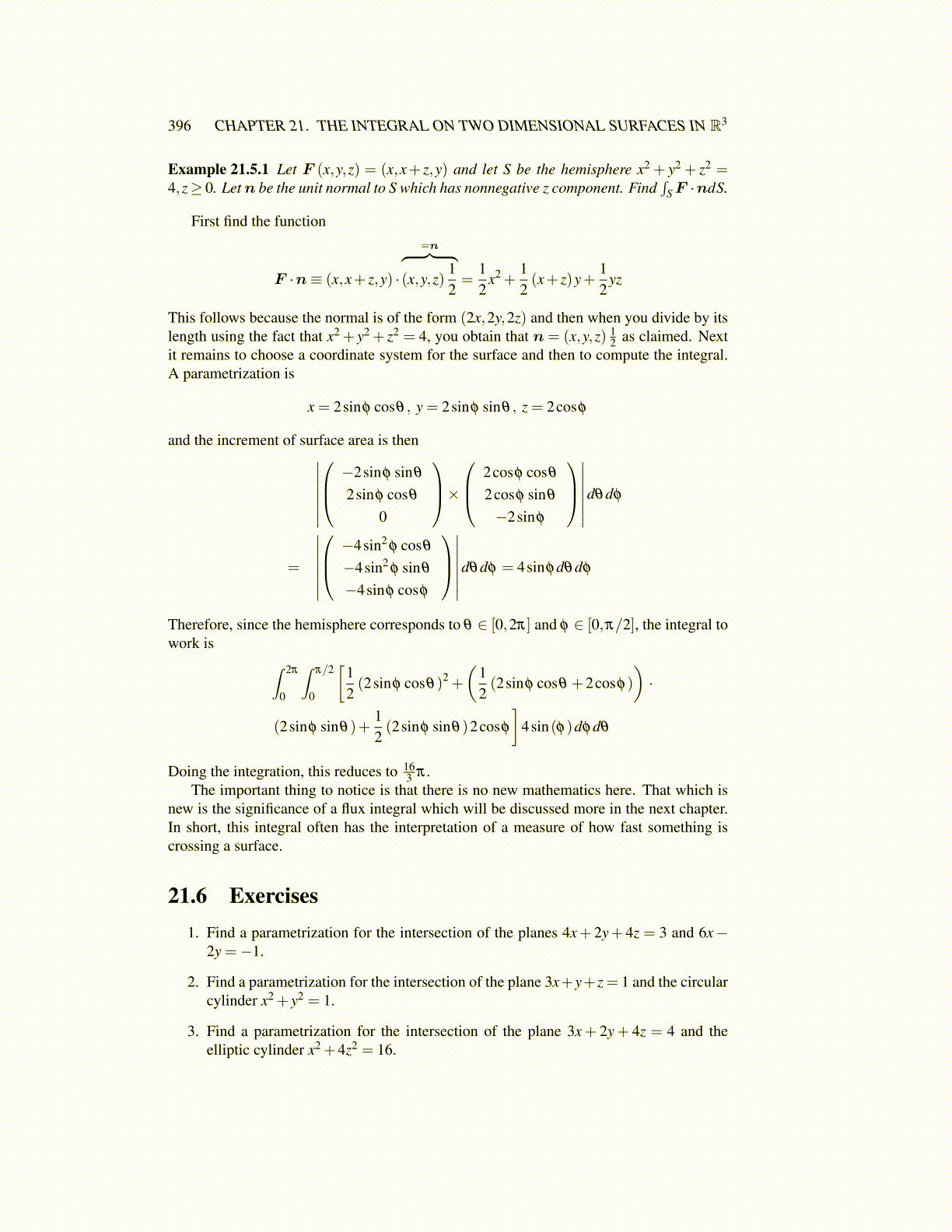
396 CHAPTER 21. THE INTEGRAL ON TWO DIMENSIONAL SURFACES IN R3
Example 21.5.1 Let F (x,y,z) = (x,x+ z,y) and let S be the hemisphere x2 + y2 + z2 =4,z≥ 0. Let n be the unit normal to S which has nonnegative z component. Find
∫SF ·ndS.
First find the function
F ·n≡ (x,x+ z,y) ·
=n︷ ︸︸ ︷(x,y,z)
12=
12
x2 +12(x+ z)y+
12
yz
This follows because the normal is of the form (2x,2y,2z) and then when you divide by itslength using the fact that x2 + y2 + z2 = 4, you obtain that n = (x,y,z) 1
2 as claimed. Nextit remains to choose a coordinate system for the surface and then to compute the integral.A parametrization is
x = 2sinφ cosθ , y = 2sinφ sinθ , z = 2cosφ
and the increment of surface area is then∣∣∣∣∣∣∣ −2sinφ sinθ
2sinφ cosθ
0
× 2cosφ cosθ
2cosφ sinθ
−2sinφ
∣∣∣∣∣∣∣dθdφ
=
∣∣∣∣∣∣∣ −4sin2
φ cosθ
−4sin2φ sinθ
−4sinφ cosφ
∣∣∣∣∣∣∣dθdφ = 4sinφdθdφ
Therefore, since the hemisphere corresponds to θ ∈ [0,2π] and φ ∈ [0,π/2], the integral towork is ∫ 2π
0
∫π/2
0
[12(2sinφ cosθ)2 +
(12(2sinφ cosθ +2cosφ)
)·
(2sinφ sinθ)+12(2sinφ sinθ)2cosφ
]4sin(φ)dφdθ
Doing the integration, this reduces to 163 π .
The important thing to notice is that there is no new mathematics here. That which isnew is the significance of a flux integral which will be discussed more in the next chapter.In short, this integral often has the interpretation of a measure of how fast something iscrossing a surface.
21.6 Exercises1. Find a parametrization for the intersection of the planes 4x+ 2y+ 4z = 3 and 6x−
2y =−1.
2. Find a parametrization for the intersection of the plane 3x+y+z = 1 and the circularcylinder x2 + y2 = 1.
3. Find a parametrization for the intersection of the plane 3x + 2y+ 4z = 4 and theelliptic cylinder x2 +4z2 = 16.